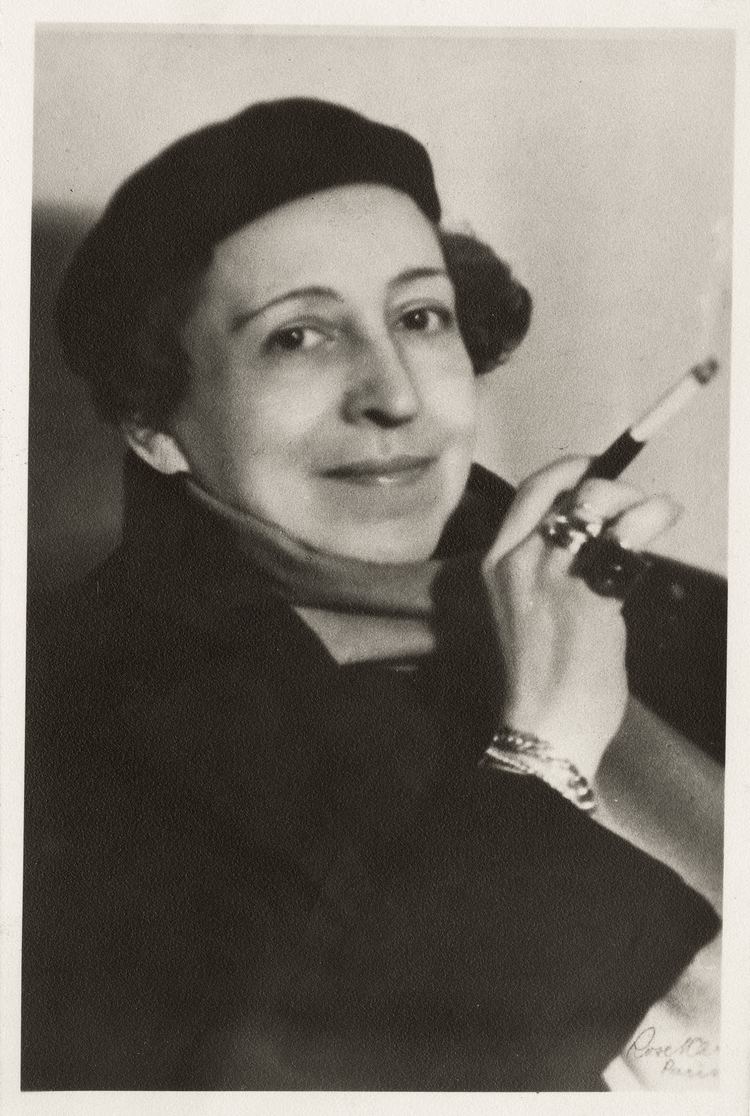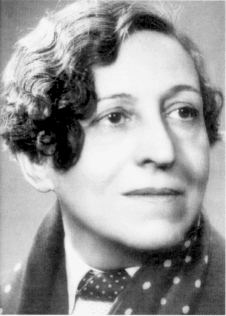Years active 1915–c.1934 Name Germaine Dulac | Role Filmmaker | |
 | ||
Full Name Charlotte Elisabeth Germaine Saisset-Schneider Spouse Albert Dulac (m. 1905–1920) Movies The Seashell and the Clergyman Similar People Rene Clair, Antonin Artaud, Eve Francis, Genica Athanasiou, Germaine Dermoz | ||
Disque 957 (Germaine Dulac, 1928)
Germaine Dulac ([dylak]; born Charlotte Elisabeth Germaine Saisset-Schneider; 17 November 1882 – 20 July 1942) was a French filmmaker, film theorist, journalist and critic. She was born in Amiens and moved to Paris in early childhood. A few years after her marriage she embarked on a journalistic career in a feminist magazine, and later became interested in film. With the help of her husband and friend she founded a film company and directed a few commercial works before slowly moving into Impressionist and Surrealist territory. She is best known today for her Impressionist film, La Souriante Madame Beudet ("The Smiling Madam Beudet", 1922/23), and her Surrealist experiment, La Coquille et le Clergyman ("The Seashell and the Clergyman", 1928). Her career as filmmaker suffered after the introduction of sound film and she spent the last decade of her life working on newsreels for Pathé and Gaumont.
Contents
- Disque 957 Germaine Dulac 1928
- 1928 Germaine Dulac La Coquille et le Clergyman highlights edit
- Biography
- Career
- Filmography
- References

1928 Germaine Dulac - "La Coquille et le Clergyman" (highlights edit)
Biography

Germaine Dulac was born in Amiens, France into an upper-middle-class family of a career military officer. Since her father's job required the family to frequently move between small garrison towns, Germaine was sent to live with her grandmother in Paris. She soon became interested in art and studied music, painting, and theater. Following the death of her parents, Dulac moved to Paris and combined her growing interests in socialism and feminism with a career in journalism. In 1905 she married Louis-Albert Dulac, an agricultural engineer who also came from an upper-class family. Four years later she began writing for La Française, a feminist magazine edited by Jane Misme where she eventually became the drama critic. Dulac also found time to work on the editorial staff of La Fronde, a radical feminist journal of the time. She also began to pursue her interest in still photography, which preceded her initial entry into filmmaking. Dulac and her husband divorced in 1920.
Following her long and influential cinema career, Dulac became the president of the Fédération des ciné-clubs, a group which promoted and presented the work of new young filmmakers, such as Joris Ivens and Jean Vigo. Dulac also taught film courses at the École Technique de Photographie et de Cinématographie on the rue de Vaugirard. Following her death in 1942, Charles Ford called attention to the difficulty the French Press had with printing her obituary:
"Bothered by Dulac’s non-conformist ideas, disturbed by her impure origins, the censors had refused the article which, only after vigorous protest by the editor-in-chief of the magazine, appeared three weeks late. Even dead, Germaine Dulac still seemed dangerous..."
Career
Dulac became interested in film in 1914 through her friend, actress Stacia Napierkowska. The two women traveled to Italy together shortly before World War I; Napierkowska was to act in a Film d'Art film, and Dulac learned the basics of the medium during that trip. In the early 1900s through the late 1920s, Dulac frequently contrasted the modernity of the French capital to the provincial nature of rural France, a common dichotomy in her films. Soon after her return to France she decided to start a film company. Dulac and writer Irène Hillel-Erlanger then founded D.H. Films, with financial support provided by Dulac's husband. The company produced several films between 1915 and 1920, all directed by Dulac and written by Hillel-Erlanger. These included Les Sœurs ennemies (1915/16; Dulac's first film), Vénus victrix, ou Dans l'ouragan de la vie (1917), Géo, le mystérieux (ou La vraie richesse, 1916), and others.
Dulac's first major success was Âmes de fous (1918), a serial melodrama written by Dulac herself. The film features an early appearance of actress Ève Francis, who introduced Dulac to her friend (later husband) Louis Delluc, filmmaker and critic. A short time later Dulac and Delluc collaborated on La Fête espagnole ("Spanish Fiesta", 1920), another film featuring Francis, which was proclaimed one of the decade's most influential films and, allegedly, a major French Impressionist Cinema work. However, only a few excerpts from the film exist today. Dulac and Delluc went on to collaborate on a number of pictures.
In 1921, Dulac reflected on a meeting with D. W. Griffith in an article she wrote entitled "Chez D.W. Griffith." In the article, Dulac presented two popular themes which arise in many of her films:
She continued her career in filmmaking, producing both simple commercial films and complex pre-Surrealist narratives such as two of her most famous works: La Souriante Madame Beudet ("The Smiling Madame Beudet", 1922/23) and La Coquille et le Clergyman ("The Seashell and the Clergyman", 1928). Both films were released before the epoch-making Un Chien Andalou (1929) by Luis Buñuel and Salvador Dalí, and La Coquille et le Clergyman is sometimes credited as the first Surrealist film; however, some scholars, such as Ephraim Katz, consider Dulac first and foremost an Impressionist filmmaker. Dulac's goal of "pure cinema" and some of her works inspired the French Cinema pur film movement. Her other important experimental films include several shorts based on music: Disque(s) 957 (1928/29; based on Chopin) and Thème et variations (1928/29; classical music), and others from the same period.
With the advent of sound film, Dulac's career shifted. From about 1930 she returned to commercial work, producing newsreels for Pathé and later for Gaumont. She died in Paris on 20 July 1942.
Filmography
The exact chronology of Dulac's oeuvre has not yet been established.
